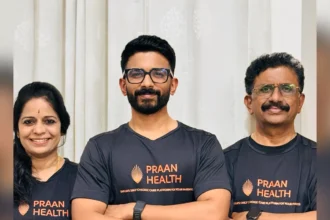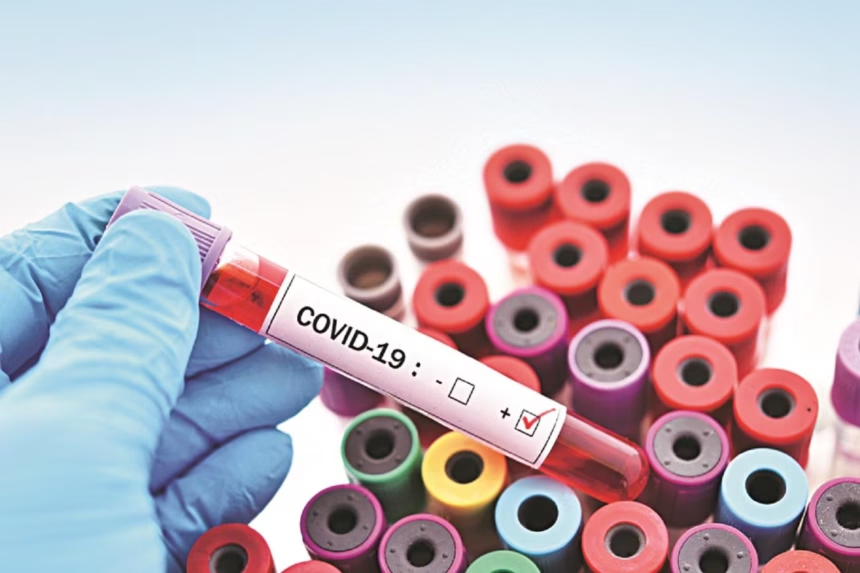As of May 19, 2025, India has reported 257 active COVID-19 cases, reflecting a modest but noticeable rise. This uptick comes amid a broader wave of infections sweeping across parts of Asia, including Singapore, Hong Kong, and Thailand. The primary driver behind this new surge? A highly transmissible sub-variant of Omicron — JN.1.
- The Asia-Wide COVID Surge: A Snapshot
- What is the JN.1 Variant? How Is It Different?
- Why Are We Seeing a Summer Wave?
- How JN.1 Spreads: More Efficient Than Ever
- Symptoms of JN.1 Infections
- Who Should Be Extra Cautious?
- How Is JN.1 Detected?
- Do Vaccines Still Work Against JN.1?
- Should You Start Wearing Masks Again?
- Is JN.1 a Cause for Panic in India?
The Asia-Wide COVID Surge: A Snapshot
Countries like Singapore have seen a steep rise in cases, with infections climbing from 11,100 in late April to over 14,000 in early May 2025. Hong Kong is also reporting an upward trend. While India’s numbers remain relatively low, experts are closely monitoring the situation, especially with the possibility of the JN.1 variant becoming prevalent.
In Singapore and Hong Kong, the surge has been associated with sub-lineages of JN.1, such as LF.7 and NB.1.8. As of now, Indian health authorities have not confirmed the circulation of JN.1 or its sub-variants in the country.
What is the JN.1 Variant? How Is It Different?
According to Yale Medicine, the JN.1 variant is a direct descendant of BA.2.86, known informally as “Pirola.” It features around 30 mutations that enhance its ability to bypass immunity. One critical mutation in its spike protein potentially increases its immune evasion, though it’s not proven to make the virus more severe.
First identified in August 2023, JN.1 was classified as a Variant of Interest by the World Health Organization (WHO) in December 2023. Though more transmissible than its predecessors, early indications show that its severity remains similar to previous Omicron variants.
Why Are We Seeing a Summer Wave?
Traditionally, respiratory infections decline during summer. However, COVID-19 appears to be defying that pattern.
“This unusual summer wave is being linked to waning immunity, since many people haven’t received booster doses in over a year,” says Dr. Diksha Goyal, Senior Consultant at Marengo Asia Hospitals, Gurugram.
“COVID-19 has become endemic. It will likely cause periodic spikes. Genomic surveillance is key,” adds Dr. Sandeep Budhiraja, Group Medical Director at Max Healthcare.
How JN.1 Spreads: More Efficient Than Ever
The JN.1 variant spreads via:
- Airborne respiratory droplets (talking, coughing, sneezing)
- Close contact in poorly ventilated indoor spaces
- Touching contaminated surfaces (less common)
Its mutations allow the virus to bind more efficiently to human cells and partially evade existing immunity, making it more contagious, especially in densely populated areas.
Symptoms of JN.1 Infections
The symptoms are largely similar to other Omicron sub-variants:
- Sore throat
- Runny or blocked nose
- Dry cough
- Fever or chills
- Headache
- Muscle aches
- Fatigue or tiredness
- Nausea or diarrhoea
- Loss of smell or taste (less common now)
“Most cases remain mild and manageable at home,” says Dr. Budhiraja. “However, people with weakened immunity may experience more fatigue or moderate symptoms.”
Who Should Be Extra Cautious?
While the general population experiences mild symptoms, high-risk groups should be vigilant:
- Senior citizens
- People with diabetes, heart conditions, or chronic illnesses
- Those on immunosuppressants
- Unvaccinated individuals
How Is JN.1 Detected?
Detection is primarily through standard RT-PCR tests, with genome sequencing used to confirm the variant.
Testing Options Include:
- RT-PCR Tests – ₹500–₹800 (gold standard; 24–48 hours)
- Rapid Antigen Tests (RATs) – Faster but less accurate
- Multiplex PCR Tests – Detect multiple respiratory viruses along with COVID-19 (costlier)
Do Vaccines Still Work Against JN.1?
Yes, current COVID-19 boosters offer significant protection against JN.1. While no specific vaccine for this sub-variant exists, booster shots reduce the risk of symptomatic infections, hospitalizations, and severe disease.
“Booster doses are highly recommended, especially for vulnerable individuals,” emphasizes Dr. Budhiraja.
Should You Start Wearing Masks Again?
Precaution is better than cure. Experts suggest adopting preventive measures:
- Wear well-fitting masks in public indoor spaces
- Practice frequent handwashing
- Avoid crowded places if feeling unwell
- Stay isolated if COVID-positive
- Get your booster dose if overdue
“This is not about panic—it’s about preparedness,” says Dr. Budhiraja.
Is JN.1 a Cause for Panic in India?
No. Current numbers are low, and most cases are mild. However, JN.1 is a reminder that COVID-19 is far from over. Think of it like the seasonal flu: usually mild, but potentially dangerous for at-risk populations.
What’s Next?
India must focus on:
- Strengthening genomic surveillance
- Encouraging booster vaccinations
- Transparent reporting and international cooperation
“Only through proactive monitoring and public awareness can we prevent the next wave,” concludes Dr. Budhiraja.







